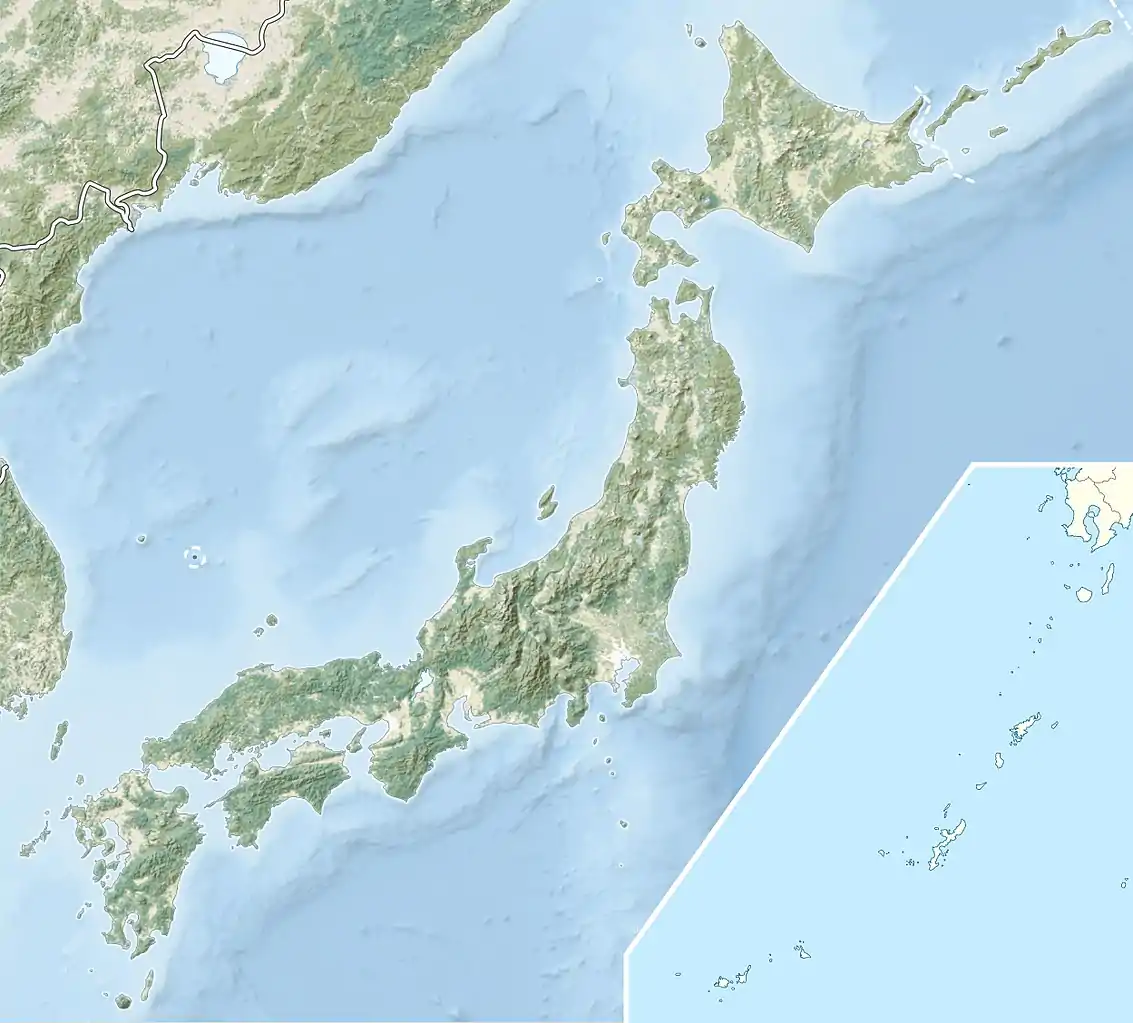Chausuyama Kofun (Mibu)
The Chausuyama Kofun (茶臼山古墳) is a keyhole-shaped kofun burial mound located in the town of Mibu, Shimotsuga District, Tochigi Prefecture in the northern Kantō region of Japan. It received protection as a National Historic Site in 1958.[1]
茶臼山古墳 | |
 Chausuyama Kofun  Chausuyama Kofun (Mibu) (Japan) | |
| Location | Mibu, Tochigi, Japan |
|---|---|
| Region | Kantō region |
| Coordinates | 36°29′22.1″N 139°46′41.2″E |
| Type | kofun |
| History | |
| Founded | late 6th century AD |
| Periods | Kofun period |
| Site notes | |
| Public access | Yes (no public facilities) |
Overview
The Chausuyama Kofun is located about 100 meters above sea level in former Hanyda Village, on the left bank of the Kurokawa River. It is a two-tiered structure with a tumulus that is 68 meters long. The dome portion has a diameter of 35.5 meters and height of 5.8 meters. The rectangular portion had a width of about 40 meters, and a height of 5.4 meters on a base of 86 meters in length. The entire structure was encircled by a moat. Fragments of haniwa were discovered on top of the burial mound, which when reconstructed provide to be a very large (180 cm) model of a house. Fragments of other haniwa and Sue ware pottery were also discovered during a survey conducted in 1895; however, the interior of the tumulus has not been excavated. The tumulus is believed to date from the second half of the 6th century. The kofun is located about 25 minutes by car from Mibu Station on the Tōbu Railway Utsunomiya Line.
References
- "茶臼山古墳" [Chausuyama kofun] (in Japanese). Agency for Cultural Affairs.
External links
- Tochigi Tourist Information (in Japanese)